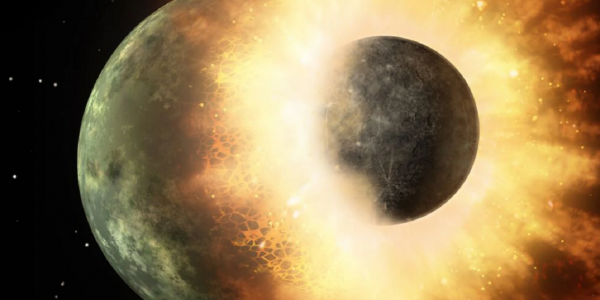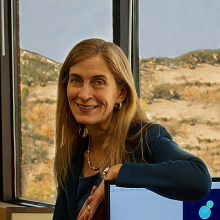Public Lecture with Robin Canup on The Origin of the Moon
The Moon has been the Earth's celestial companion throughout our planet's history, and the ancient surface and geology of the Moon retain clues to how our Earth-Moon system formed more than 4 billion years ago. A primary scientific outcome of the Apollo program was the so-called giant impact theory for lunar origin, in which a collision at the end of Earth’s formation created a debris disk orbiting the Earth from which the Moon later accumulated. In the past decade, the nature of the envisioned Moon-forming giant impact has become highly debated, driven by increasingly precise sample analyses that show that the Earth and Moon have essentially identical isotopic compositions across many elements, including oxygen. In this talk, Canup will describe current ideas for how our Earth-Moon pair formed, key remaining areas of uncertainty, and how planned near-term lunar exploration should help us to unravel how our planet and its remarkable Moon came to be.
Robin Canup is vice president of the Solar System Science and Exploration division of Southwest Research Institute in Boulder, Colorado. She is well known for her significant contributions to planetary sciences, most notably her studies concerning the formation of planets and their satellite and ring systems, including her research on the origin and early evolution of the Earth-Moon system. She has received several honors during her career including the American Astronomical Society Division for Planetary Sciences’ Harold Urey Prize (2003) and the American Geophysical Union’s Macelwane Medal (2004). In 2012, she was elected a member of the National Academy of Sciences and in 2017 she was elected to the American Academy of Arts and Sciences. From 2020 to 2022 she co-chaired the Planetary Science and Astrobiology Decadal Survey, whose report entitled “Origins, Worlds, and Life” prioritized science and activities for the nation’s planetary science and astrobiology program for the next decade.
Header image: Scientists use computer models to simulate how the moon may have formed. (Credit: NASA/JPL-Caltech)

